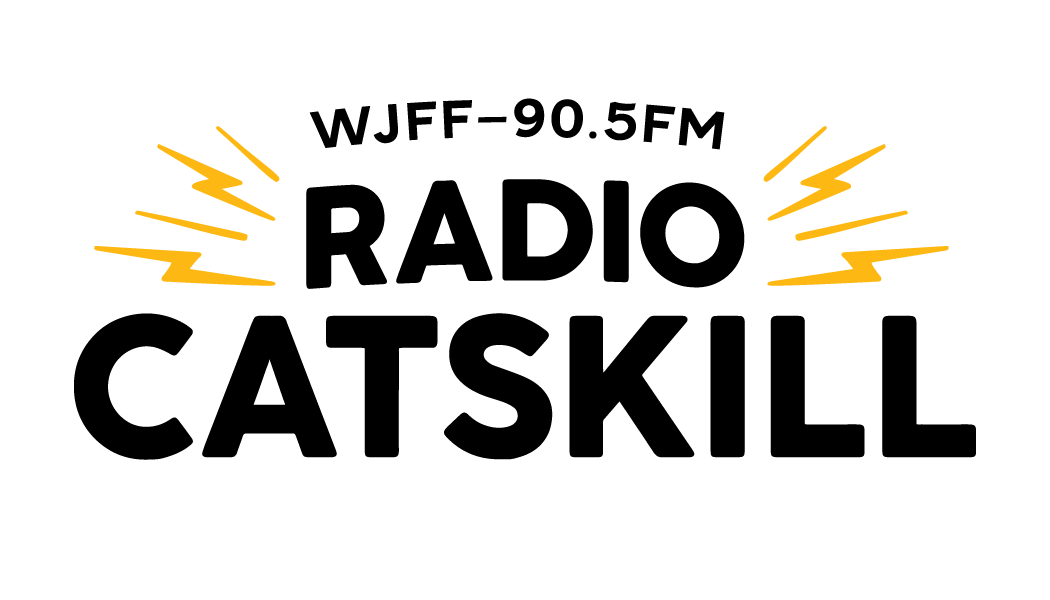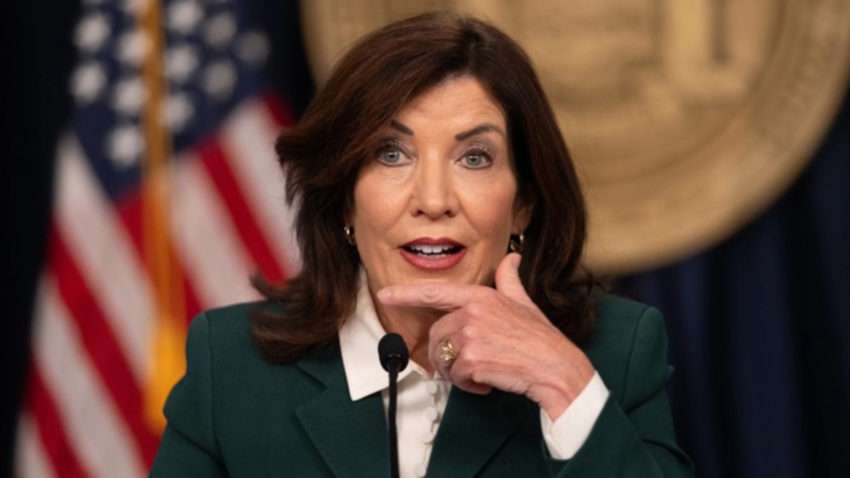21-year-old William Dlugozima’s journey to becoming a mental health advocate at the Hudson Valley Clubhouse started with his own recovery.
Dlugozima joined the newly established, community-centered mental health program in Poughkeepsie, NY last year in a period of extreme depression. Referred to the clubhouse after a stay in a psychiatric hospital, Dlugozima described how the community there, which emphasized connecting people struggling with mental health issues to one another and to critical resources, served as a launch point — propelling his desire to study visual arts at Dutchess Community College and his own advocacy for young adult programming in the clubhouse and community-centered approaches to recovery as a whole.
“This clubhouse has really given me a purpose in life,” Dlugozima said in an interview with Radio Catskill. “Prior to the clubhouse, I was in bed 24/7, but here I’m actively participating — I am creating groups to make other people feel the same way I feel.”
The clubhouse model is one type of evidence-based, community-centered program here in New York that works to support residents struggling with serious mental health issues. The Hudson Valley Clubhouse is the first of its kind in upstate New York after the original clubhouse was established 75 years ago in New York City. But the major state-funded, community-based mental health programs available for New Yorkers are supportive housing, which consists of affordable, permanent housing with on-site services, and Assertive Community Treatment (ACT), in which a team of mental health professionals travels to a person’s own community to provide mental health support.
The issue lies in the fact that thousands of New Yorkers—including those living in Dutchess, Orange, and Sullivan counties—are facing long waitlists for supportive housing and ACT services. According to an article by New York Focus, every Sullivan County resident who applied for supportive housing programs in 2022, 2023, or 2024 was placed on a waitlist lasting up to a couple of years.
Despite funding towards these initiatives having increased over the years, Luke Sikinyi, Director of Policy at the Alliance of Rights and Recovery, a statewide nonprofit dedicated to mental health advocacy, said that this backlog is because these increases have yet to make up for decades of underfunding for community-based programs and the infrastructure required to run them — in terms of both housing units and staff members. Sikinyi said the staff behind these services are having to work with limited funding even as they face a high cost of living, contributing to high turnover and vacancy rates that decrease the viability of these programs. Despite calling for a 7.8% rate enhancement for mental health agencies, he explained that the workforce only received 2.6%, which is underneath the current inflation rate of 3.1%.
“We see a very high percentage of our mental health and substance use workforce relies on public assistance themselves because they don’t have a high enough salary to put food on the table by themselves,” Sikinyi said. “What does it say about our society if the people who take care of the vulnerable are the vulnerable themselves because we haven’t put enough investment there.”
But waitlists are not the only barrier. Blaise Sackett, Executive Director of the Hudson Valley Clubhouse, said more rural communities in the Hudson Valley, such as those in Dutchess and Sullivan counties, have long faced disparities in access due to a lack of adequate transportation — alongside other factors such as insufficient broadband access. Furthermore, Sarah Santos, who is Program Director of the Clubhouse, said the logistics of services that are meant to address the predominant need for housing among New Yorkers, but especially those struggling with mental health and substance abuse issues have proven utterly difficult.
“[For] temporary assistance, where people are provided a certain amount of money a month to go toward housing, the numbers that people are provided — it’s about $900 for a studio, $1100 for a one-bedroom and $1200 for a two-bedroom. There’s nothing that exists in that realm, and people are required to do 10 housing searches a week. And if they don’t keep up with that, then their case can be closed and they can be sanctioned, which means they can’t access any resources for sometimes a month at a time, could be even more,” Santos said.” Having to keep up with certain amounts of appointments, doing those housing searches, submitting documentation constantly, it’s a lot to take on if you’re sleeping outside, especially if you live with a mental health condition or a substance use disorder on top of that.”
On the policy level, however, the attention has been — for the most part — not on improving these community-based programs but rather increasing institutional settings.
“There’s been investment in hospitals. There’s been a push to open more beds, but there’s been less investment in the services that make sure that people stay out of the hospitals in the first place,” Sikinyi said. “And while we saw some [funding] in the state, it is paltry in comparison to what they’re pushing for institutional settings. For example, there’s [$160] million for a new forensic facility on Wards Island that we might not see for another five years. Whereas, when you total housing and community services dollars that were new dollars, it was less than a hundred million for those new programs.”
This comes as Governor Kathy Hochul expanded involuntary commitment in the state’s latest budget amid fears for public safety in connection to the rise in homelessness in New York City, as to where police and clinicians now have more power to forcibly hospitalize people they deem as experiencing a mental health crisis. Police and clinicians no longer need “evidence of imminent risk or recent overt acts” to involuntarily commit someone, and individuals can be deemed as prone to committing substantial harm based on “their inability to meet basic needs like food, shelter, or medical care.”
It was a proposal that received significant pushback from mental health organizations like the Alliance of Rights and Recovery because of its linking of mental illness and homelessness to violence and its failure to address the root causes of mental health crises, Sikinyi said. In addition, its increased incorporation of police who are not trained in de-escalating mental health crises — often resorting to violence in the case of Black and brown individuals — has raised concerns.
“I travel throughout the state, and one of the things that we heard consistently was that the two biggest challenges faced by people were lack of affordable housing, which is why there’s been a rise in homelessness, and lack of access to effective services in the community,” Sikinyi said. “So we really saw this as putting our funding and our emphasis on the mental health system in the wrong place. Because hospitals, while they are a component of the mental health system, I think a lot of politicians, the public, the media put far more focus on hospitals when it comes to mental health than what the real reality of the system is. People go into hospitals, but hospitals do not guarantee sustained recovery. That’s really the community-based supports that helps you day in [and day out], help you maintain housing, help you maintain your services.”
Although hospitalization can be an important measure to address a mental health crisis, Dlugozima personally described his time in a hospital as “restrictive” and “stressful” in comparison to the Clubhouse. Santos said that she has been able to witness firsthand the effectiveness of framing support in terms of mobilizing resources for people struggling with mental illness. After an unhoused individual came in telling staff about their plan to take their life, Santos said the Clubhouse immediately helped connect them to a mental health provider and find housing accommodations, which eventually encouraged them to take a GED course and get involved in political advocacy in Dutchess County themselves.
“We really believe that those acute needs need to be met first before someone can move on into the sort of next step of their lives,” Santos said.
Fortunately, Sikinyi said that state funding is still going towards programs that diverge from involuntary commitment, including clubhouses, non-police crisis response programs and peer-to-peer support services. But the state trend towards increased hospitalization and impending healthcare cuts with the passing of president Trump’s “One, Big, Beautiful Bill” still raises serious concern.
Sikinyi said, “We’re seeing more push to institutionalization, less funding for community services and then Medicaid cuts will also lead more people off of insurance and more towards those high-cost, emergency and institutional sort of settings.”
Image: Governor Kathy Hochul speaks on congestion pricing in New York City at a press conference held November 14, 2024. (Photo Credit: Don Pollard / Office of Governor Kathy Hochul)

